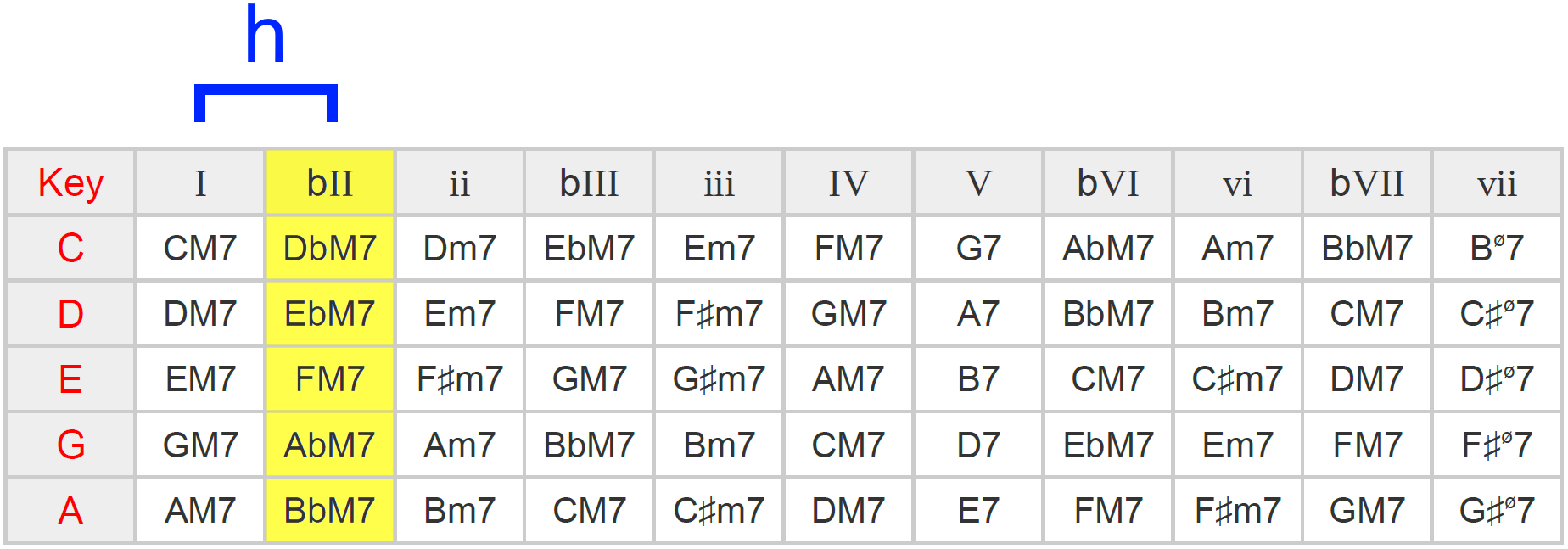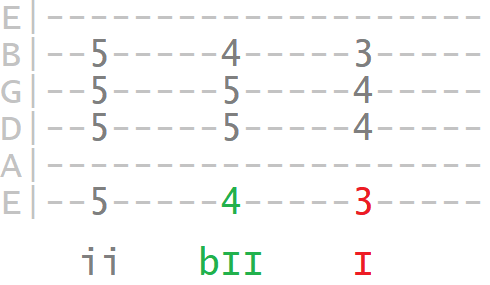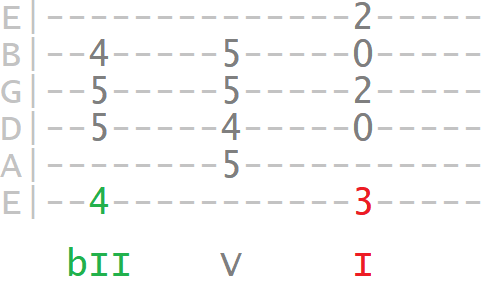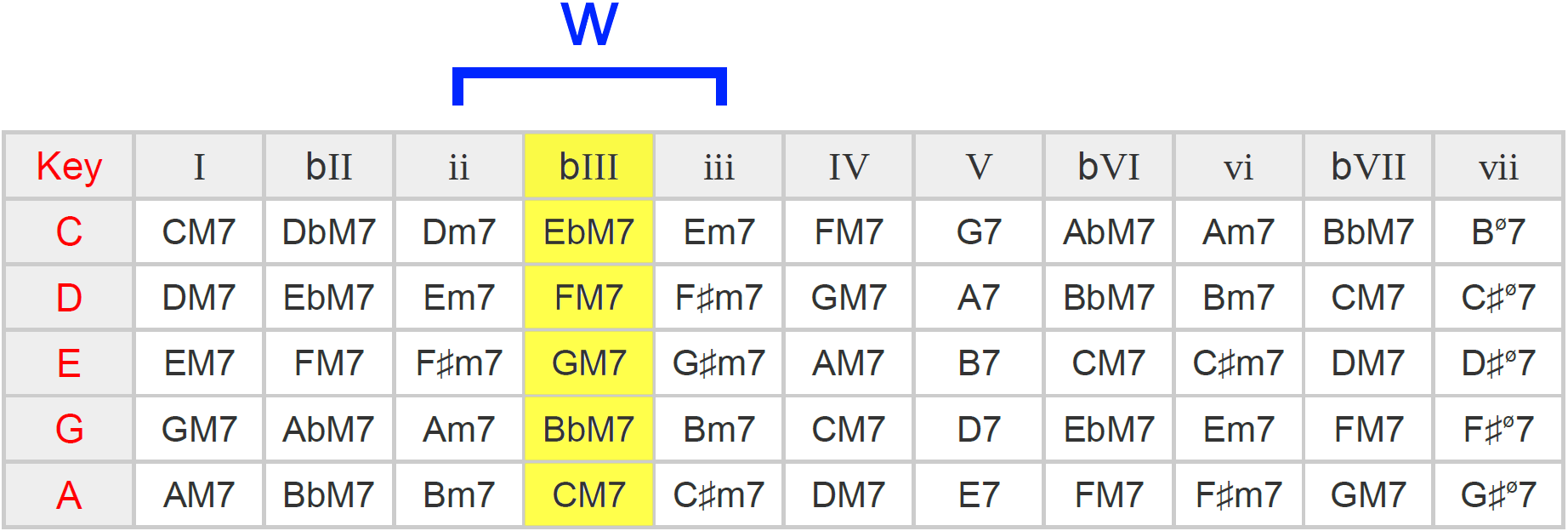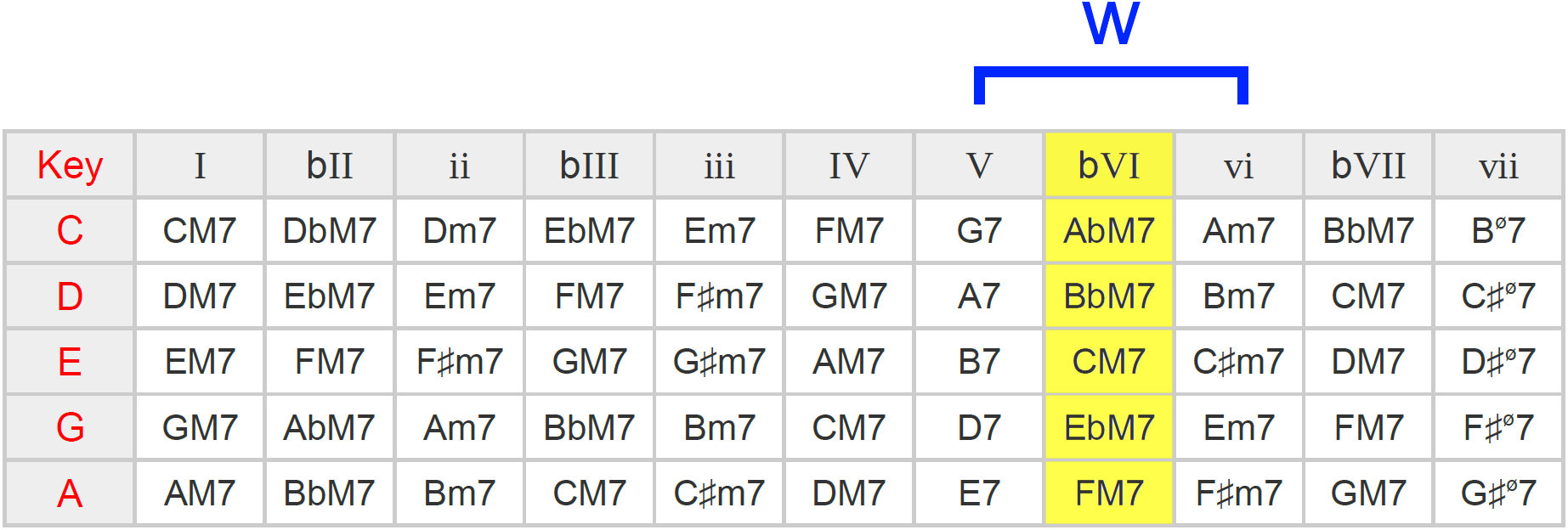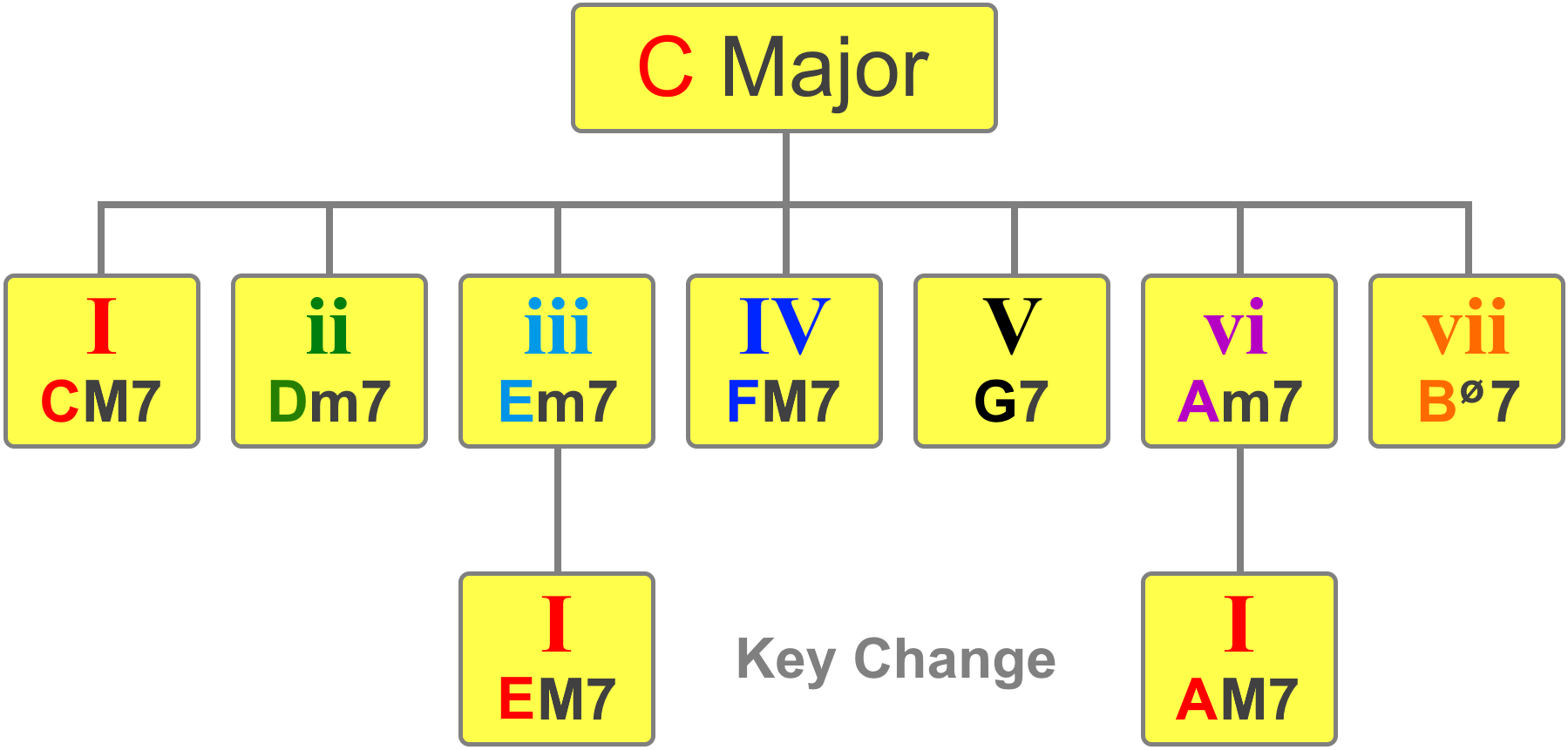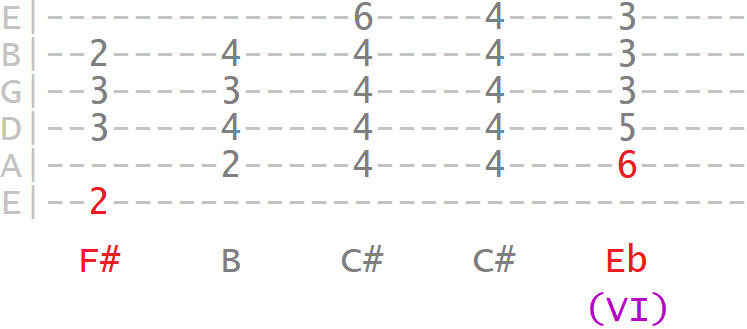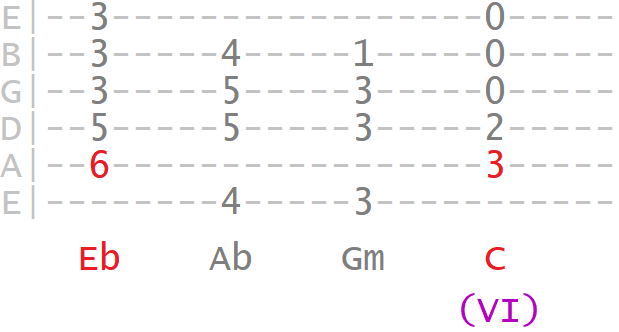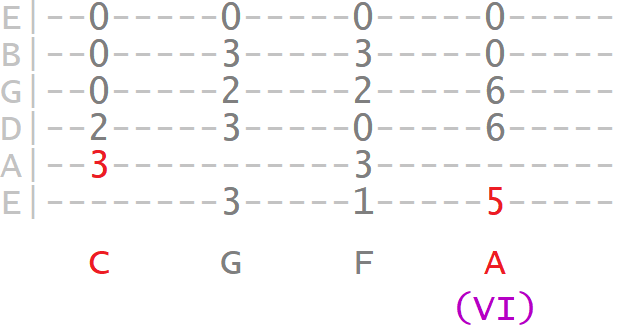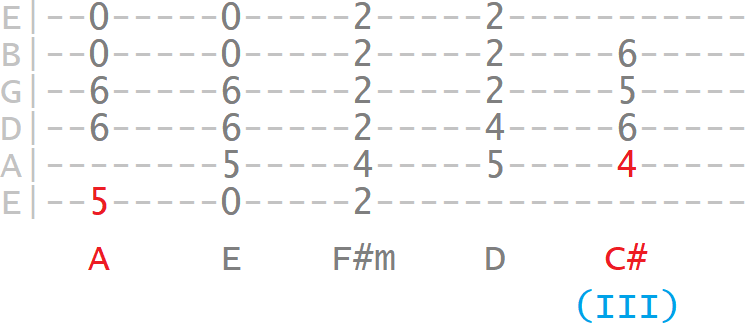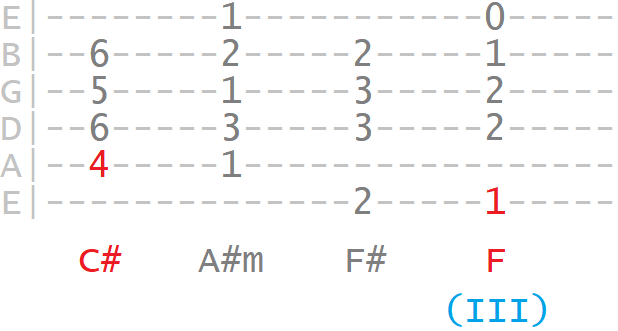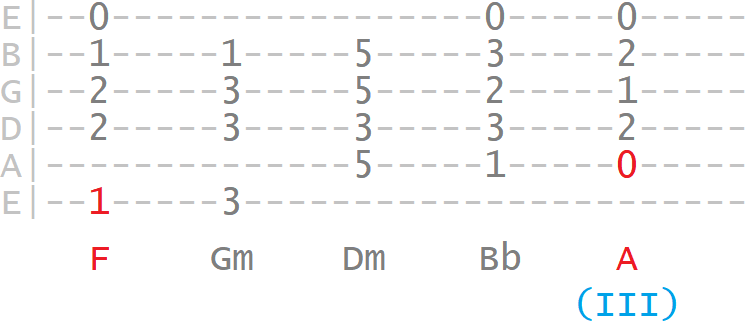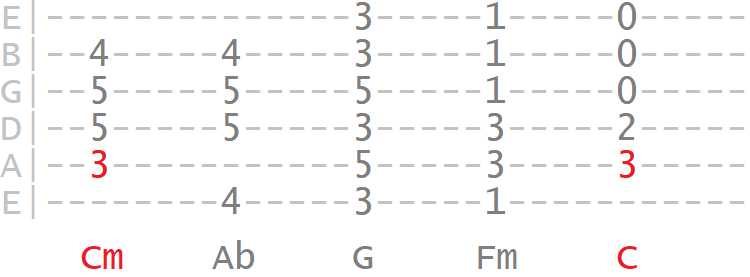Diatonic (Natural) Maj7 Positions
In major keys, using the major scale as our harmonised system, the major 7th chord naturally occurs on the tonic or 1st degree and the subdominant or 4th degree...
So in the key of G major, for example, Gmaj7 and Cmaj7 would be our 1 and 4 chords respectively. And we could play this relationship in several positions and using several shapes...
As you can see from that example, we used major 7th shapes rooted on the lowest three strings. But it was all the same 1 / 4 relationship.
So as well as learning the core major 7th shapes, it's useful to memorise how this common 1 / 4 relationship appears on the neck, so we can identify and play it in any key.
Non-Diatonic (Outside) Major 7th Chords
While it's most common to hear the major 7th chord used on the 1st and 4th degrees, it also sounds good in certain positions outside the natural or diatonic key.
The Flat 2nd (♭II) Degree
Starting with what we might call the flat second or (♭II) supertonic degree. This can be seen as a half step or one fret up from the key's tonic...
Try placing a maj7 chord on this degree within a larger progression. For example, in the key of G major, Abmaj7 would be our ♭II chord...
Although this flat 2nd degree major 7th chord might sound a little unusual at first, it has quite a versatile function. For example, it works nicely as as a pre-tonic chord or dominant substitution. This is where we resolve to the tonic straight from the flat 2nd degree...
Or as a pre-dominant chord, where we follow the flat 2nd degree with the 5th degree or dominant (V)...
The Flat 3rd (♭III) Degree
On to our next example, which could be called the flat 3rd (♭III) degree or mediant chord. This can be seen as a minor 3rd up from the tonic, or in between the natural 2 and 3 chords...
Again, try building a maj7 chord on this position as part of a progression, such as these examples in A major, with Cmaj7 being our ♭III...
Flat 6th (♭VI) Degree
We could build a major 7th chord on the flat 6th (♭VI) or submediant degree. This can be seen as one half step or fret up from the 5 or dominant, or down from the natural 6th degree...
A couple of examples in the key of D major, with B♭maj7 as our ♭VI...
Flat 7th (♭VII) Degree
Finally, the flat 7th (♭VII) degree, also known as the subtonic. A whole step or two frets down from the tonic...
Examples in the key of C major, with B♭maj7 as our ♭VII...

Non-Diatonic Maj7 In Summary
There are many words to describe the sound these "outside" maj7 chords create, but by injecting them into your progressions, you can vastly expand your songwriting options!
Let's summarise these new additions by incorporating them into a larger E major key progression...
Interestingly, we can even play these major 7th positions over a fixed root. For example, in the key of A major, if we kept the bass note of A open throughout, these maj7 positions offer us some unique colours...
Major 7th Chords In Modulation (Key Changes)
Because of the natural restfulness of the major 7th chord, it can be used effectively to modulate and establish new key centers. This really brings out the bright, soulful colour of the major 7th chord and there are a couple of positions on which this works particularly well.
For example, if we started in the key of C major, we might use its 3rd or 6th degrees to modulate to a new key, using a major 7th chord on either of those degrees...
6th Degree (vi) Modulation
Take this example, starting in A major. Here we're modulating to F♯ major using F♯maj7, built on the relative 6th degree of our original key, A major...
In that example I used the 5 (V) of the original key (E) as an approach to the new tonic. This is known as a backdoor modulation, where the 5 of the original key becomes the flat 7 or subtonic degree of the new key.
From this new tonic of F♯ major, let's try modulating to its relative 6th degree of E♭ and the new key of E♭ major. Again we used the "backdoor" approach to our new key...
From E♭ major to its relative 6th degree of C and the new key of C major. This time I arrive from the original key's 3 chord, Gm in this case, which became the 5 (v) of our new C major key...
And finally back to A major, straight from C major's 4 chord, F major...
As you can hear, by using a major 7th chord on this 6th degree, we can create a strong yet rather unpredictable shift in key center.
3rd Degree (iii) Modulation
Another strong modulating point is on the 3rd degree of a given key.
Again, starting in A major, we could modulate to C♯ major, affirmed with C♯maj7. Typically we'd modulate down a semitone from the 4 (IV) chord of the original key, Dmaj7 in this case...
From this new tonic of C♯ major, let's try modulating to its relative 3rd degree and the key of F major...
And finally From F major to its 3rd degree of A, back into the key of A major...
Parallel Key Change
If we start in a minor key, the maj7 chord can be used to complement a parallel key change. This is where we change from minor to major (or vice versa) on the tonic position. For example, here I start in the key of C minor and resolve to its parallel C major...
So we have the choice to resolve expectedly back to C minor, or more unexpectedly to C major, using Cmaj7.
Final Words...
In another part, we'll look at how to create even more colour by using major 9th and 13th variations.
But for now, experiment with using major 7th chord in different places, hear where they take you and let your ears be the ultimate judge.



